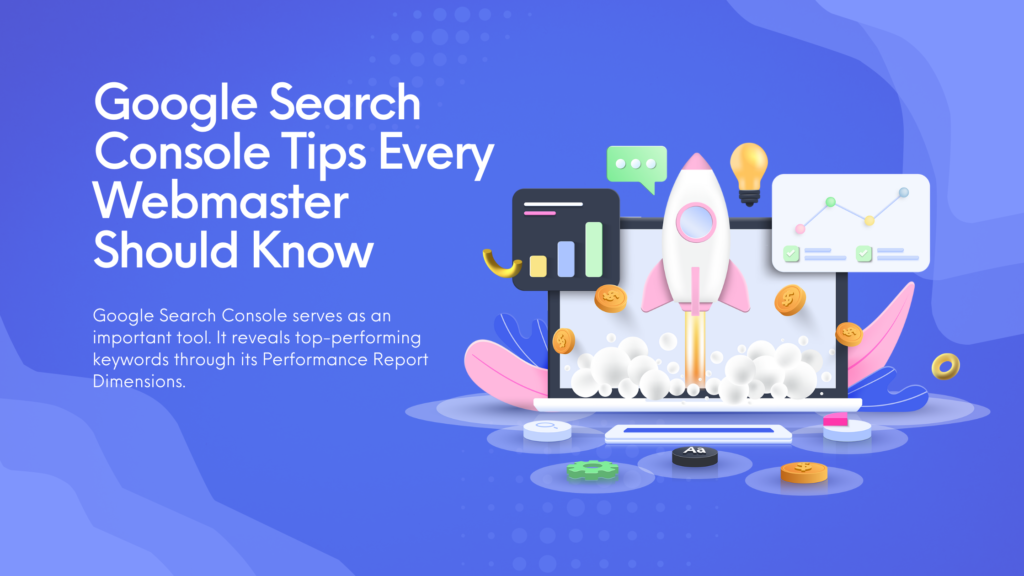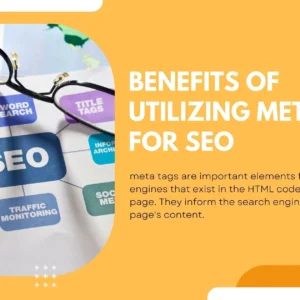Ever felt like your website was floating in the vast online space without a map? Well, say hello to your digital compass—Google Search Console! Imagine a world where your website not only looks good but also grabs the attention it deserves. That’s the magic of understanding the Google Search Console. It’s like having a backstage pass to the SEO and digital marketing concert, and trust us, you don’t want to miss it.
Every webmaster seeks to boost their site’s visibility. Google Search Console is a free tool that serves this purpose well. This service gives you insights into your website’s performance in Google searches. It aids search marketing experts and publishers alike. With it, one can track various metrics that highlight the user experience and search efficiency. It even alerts them about security issues or penalties from manual actions by Google’s team—key factors affecting a site’s health online. Neglecting Google Search Console can have a negative impact on your website’s performance.
So, grab a snack, get comfy, and let’s uncover the secrets that can transform your webmaster journey. Because in this digital era, every click matters, and with Google Search Console, you’re about to turn those clicks into a standing ovation! Ready for the ride? Let’s roll!

All About Search Queries:
In the digital marketing realm, understanding search queries is pivotal for any webmaster. Google Search Console serves as an important tool. It reveals top-performing keywords through its Performance Report Dimensions. These insights show not just volume but also how users find your site—be it standard or Web Light results on slower devices.
Analyzing clicks and impressions sheds light on user engagement with different query types. Some may only draw sparse traffic. These long-tail searches might seem insignificant yet they can reveal hidden opportunities when optimized. While high-traffic terms grab attention, don’t overlook the less frequent ones. They often hold potential to boost your online presence swiftly if addressed.
A page’s absence of internal links or a deserving keyword without a dedicated webpage could be culprits behind underwhelming performance. Links play another crucial role in SEO strategy outlined by Search Console’s Links report listing all inbound connections to one’s domain—a diverse link profile benefits, though it doesn’t infer enhanced ranking power per se. Forgetting about Google Search Console tools might mean missing out on these valuable chances that refine SEO and digital marketing efforts.
Optimizing mobile usability:
When thinking mobile, one must remember: phones have taken over. Nearly everyone browses on these small screens now. Google knows this and thus looks closely at how sites work for thumb scrolling and tiny texts.
With that in mind, dive into your site’s nitty-gritty using the Google Search Console to boost its appeal to those on the move. Neglecting Google Search Console can be a turning point in mobile optimization. For starters, check if fonts look like ants—no good; they should grow a bit bigger! Ensure buttons don’t ask for needle-point precision; fingers aren’t pencils after all!
Your website has got to shape-shift smoothly across devices, or it’ll take a hit in rankings—a big no-no if you’re chasing SEO and digital marketing success. Keep load times quick too—as breezy as flicking through pages of your favorite book; nothing kills buzz like waiting an eternity for a screen refresh. Fine-tuning these will pave the path toward more clicks, lower bounces, and yes—an audience that stays because everything just works right there in their palms.
Leveraging Performance Reports:
In the realm of web mastery, one’s skill in using performance reports can’t be overstated. These reports shed light on how well a site stands out to Google—a critical insight for anyone who cares about online visibility. They show key metrics like click-through rates, which hint at whether users find your content appealing based on search results alone.
Now consider that this data also includes page load times; slow pages often lose visitors fast. SEO and digital marketing experts use these figures to tweak their sites—trimming excess off sluggish pages or rewriting meta descriptions for clarity and appeal. This isn’t just busywork; real gains stem from such diligence—an uptick in user engagement here means more eyes there where it counts most: on your content.
Enhancing site Link Structure:
To boost a website’s link structure, SEO and digital marketing must pinpoint and bolster key internal links. This strategy enhances navigation for users, along with crawlers assessment of page significance within the site’s hierarchy. Experts advise using descriptive anchor texts that give clear hints about the linked content rather than vague prompts like “click here.” Additionally, they recommend streamlining menus to showcase vital sections prominently; this approach simplifies user journeys around your digital space.
Consolidating similar topics into single authoritative pages can fortify relevance signals sent to search engines—a method known as ‘cornerstone content.’ Regular audits help identify broken or outdated links which could harm site integrity if left unchecked. Striking a balance between quantity and quality of links is essential: too many might confuse visitors while too few may miss opportunities for depth exploration. Remembering these practices ensures that both human visitors and algorithmic evaluations recognize value in what you present online—crucial for thriving in today’s competitive digital landscape.
Fixing Crawl Errors Quickly:
Fixing crawl errors swiftly is crucial to maintaining a site’s health. The Google Search Console provides an overview of these issues in the Crawl Errors section. There, one identifies both site and URL-specific problems.
Site-level blunders can vastly impact usability; they should not be neglected at any cost. The dashboard allows viewing of such errors for the past 90 days—examining them daily is wise. DNS errors are particularly dire. They prevent Googlebot from reaching your domain, indicating issues like timeouts or lookup problems with your host provider, such as Namecheap or GoDaddy, or possibly another if hosting is separate from domain services.
Immediate action upon severe DNS alerts cannot be overstated; it holds significant importance for website connectivity and overall performance online.
Submitting Sitemaps Regularly:
Every SEO and digital marketing expert should submit their XML sitemap to Google Search Console regularly. This crucial step ensures that Google knows about all the pages on a site, aiding quicker indexing. One submits by selecting ‘Sitemaps’ in the console and entering the sitemap’s URL—confirmation comes promptly.
A well-submitted sitemap updates last read dates and page counts; it clarifies errors too, like wrong URLs or formatting mistakes. If issues arise with an old map—maybe it’s bloated or outdated—removing it is simple: one requests via ‘Remove Sitemaps’. Deleting from your server works as well, since no file means nothing for Google to scan over time.
Improving User Experience:
SEO and digital marketing masters must focus on sharpening the user experience. Google applauds when visitors stay longer on a page; it signals content value and relevance. To captivate users, one’s material should engage instantly, delivering sought-after information without delay.
This achievement encourages favorable search rankings. Another strategy involves improving internal links—an easier task than earning external ones—helping search engines grasp your site’s structure and emphasis through frequent link occurrences to certain pages. It also aids in boosting those important pages’ rankings but remember: context matters for linking appropriately to avoid negative experiences.
Leveraging ‘Core Web Vitals’ from Search Console is wise as well; this 2020 feature assesses website speed—a significant ranking element—and offers actionable advice for enhancing performance scores across devices.
Utilizing Security Issues Tab:
The Security Issues tab in Google Search Console is a critical spotlight for SEO and digital marketing masters. It scans and reports possible threats like malware, harmful downloads, and unusual security blunders that could harm site visitors or tarnish the website’s integrity. This tool alerts owners when Google spots risky code or suspicious activity on their pages.
Immediate action based on these insights can prevent blacklisting by browsers or search engines—a nightmare for traffic flow to your digital doorstep. In essence, this nifty feature supports the safeguarding of user experience while maintaining trustworthiness with search giants—key cogs in any SEO strategy wheelhouse aiming at high-ranking results that drive organic growth efficiently without spending a penny. Google makes it easy; one click away from ensuring peace of mind about online safety concerns, crucially smooth-running websites thrive today.
Analyzing Backlink Profiles:
Backlink profiles are critical to any site’s SEO health. One digs into this by looking at who links back, assessing link quality, and noting how diverse the sources are. Experts use tools that show which sites point to theirs; they spot patterns here.
Top-notch links can boost rank as search engines see these as trust signals—a mark of content worthiness. A webmaster checks for spammy or low-quality sites linking in too, because such unwanted ties harm a site’s reputation with Google. By analyzing anchor texts—words used in those inbound links—one ensures relevance and avoids over-optimization penalties.
Regularly reviewing your backlink profile helps keep your website credible and authoritative—key elements that align with Google’s E-A-T guidelines (expertise, authority, and trustworthiness). Keeping an eye on the types of domains that refer traffic is essential so one spots opportunities while mitigating risks timely.
A skilled SEO and digital marketing expert harnesses Google Search Console’s power to boost a site’s presence. They track key metrics, refine search queries, ensure mobile compatibility, and fix crawl errors swiftly. Regularly checking indexing status keeps pages visible to users. Smart sitemaps guide crawlers effectively. This tool is vital for online success.
Addressing Common Queries About Google Search Console
To wrap up our guide, let’s address some frequently asked questions regarding Google Search Console.
1. How Can I Effectively Debug and Fix Crawl Errors in Google Search Console?
Explore practical tips on identifying and resolving crawl errors to ensure a smooth indexing process. From interpreting error reports to implementing fixes, we’ll guide you through the debugging process.
2. Can Updating Content Affect the Indexing of a Page in Google Search Console?
Understand the correlation between content updates and page indexing. Learn how Google Search Console reflects these changes and strategies to ensure timely and effective indexing of your updated content.
3. Can Google Search Console Provide Information on the Competition Level of Keywords for Free?
Discover how Google Search Console offers insights into the competition level of keywords. It empower you to refine your keyword strategy without additional costs. Leverage this valuable information to stay ahead of the competition in your niche.
Conclusion
Mastering Google Search Console is essential for webmasters seeking to optimize their websites for search engines. By incorporating these tips and strategies into your SEO arsenal, you’ll not only avoid common mistakes but also propel your site to new heights in search rankings. Stay informed, adapt to algorithm changes, and watch your organic traffic soar. Google Search Console is your ally in the ever-evolving landscape of SEO and digital marketing.






